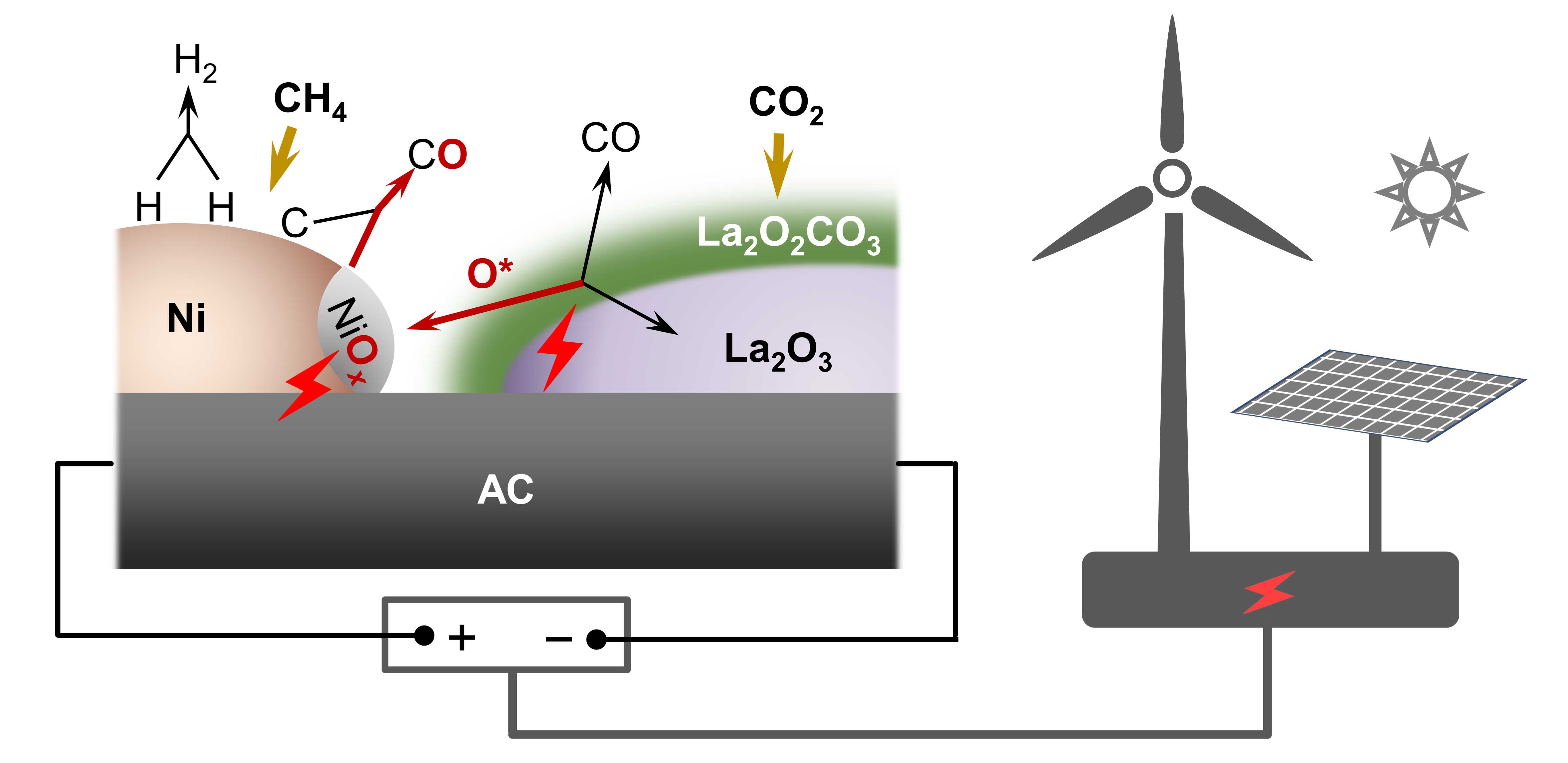
Chinese researchers have developed an innovative electrified catalysis strategy that removes more greenhouse gases than it generates, achieving net-negative emissions.
Carbon dioxide (CO2) and methane (CH4) are the two largest anthropogenic greenhouse gases, accounting for 95% of human-caused global warming. For this reason, removing them from the atmosphere is a high scientific priority.
One method of removal is conversion of the two compounds into syngas—a crucial feedstock for high-value chemicals—through a process known as dry reforming of methane (DRM). Unfortunately, conventional DRM—which operates at high temperatures exceeding 800°C—is typically powered by fossil fuels. This creates a carbon paradox: The CO2 released during combustion often outweighs the amount converted, undermining efforts to reduce CO2 emissions and mitigate climate change.
Now, however, a research team led by Prof. ZHANG Jian and Prof. ZHANG Yexin from the Ningbo Institute of Materials Technology and Engineering (NIMTE) of the Chinese Academy of Sciences, together with Prof. ZHANG Zhaoliang from the University of Jinan, has developed a novel electrified catalysis strategy for DRM, which they termed electrified DRM (e-DRM).
In the study published in Science Advances, the e-DRM process converts CO2 and CH4 into syngas (H2/CO) with an impressive energy utilization rate of 80%. This innovative approach achieves thermodynamic equilibrium conversion and maintains stability for over 120 hours. Furthermore, it demonstrated a record-high energy efficiency of 2.976 mmol/kJ, according to Prof. ZHANG Yexin.
Using renewable electricity from sources such as wind, solar, hydropower, and nuclear energy, this process can convert more CO2 than is emitted during electricity generation.
Mechanistic studies revealed that electrically driven lattice oxygen transfer accelerates redox cycles between CO2 and CH4. This universal effect observed in electrified catalysis has also been observed in other electrified reactions, including soot oxidation and NOx reduction.
This breakthrough potentially advances the transition of DRM from laboratory research to commercial application, providing transformative benefits across environmental, social, and governance dimensions.
This work was supported by the National Natural Science Foundation of China, the Taishan Scholar Program of Shandong of China, and the Ningbo Municipal Natural Science Foundation of China, among others.

The electrified dry reforming of methane mechanism for net-negative greenhouse gas emissions. (Image by NIMTE)

86-10-68597521 (day)
86-10-68597289 (night)

52 Sanlihe Rd., Xicheng District,
Beijing, China (100864)

